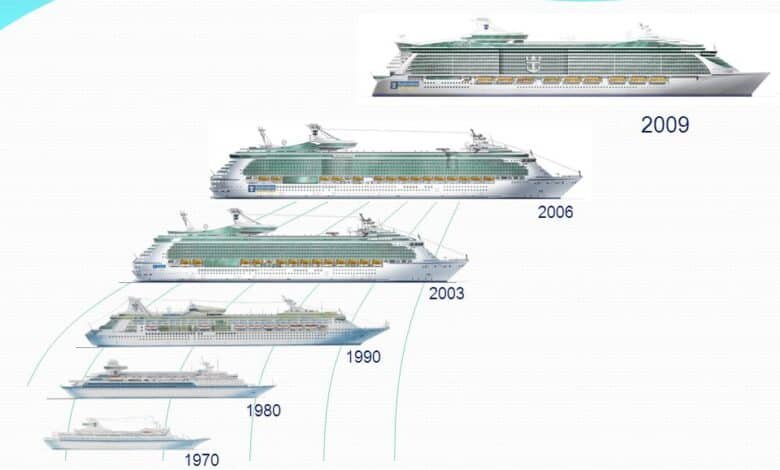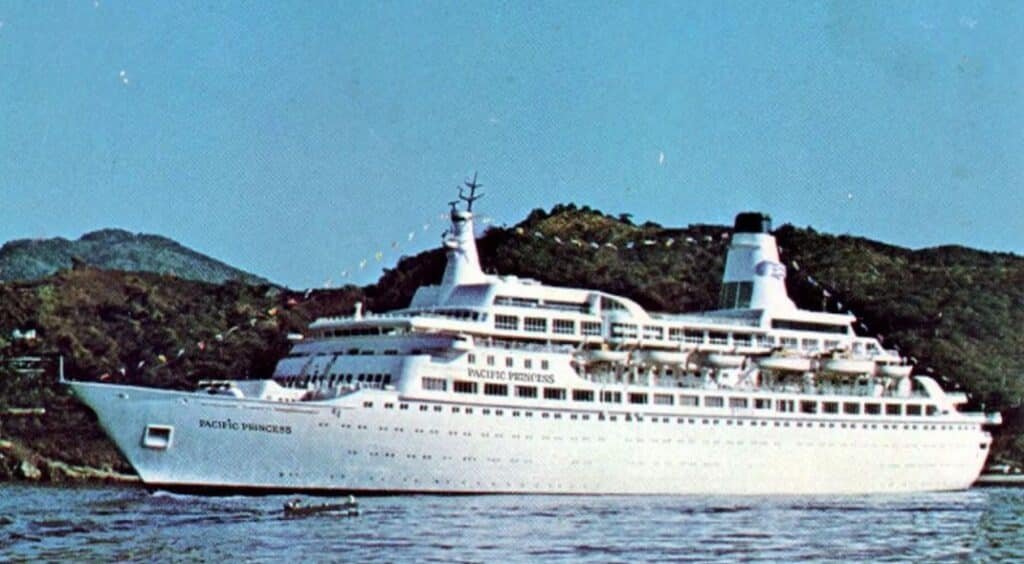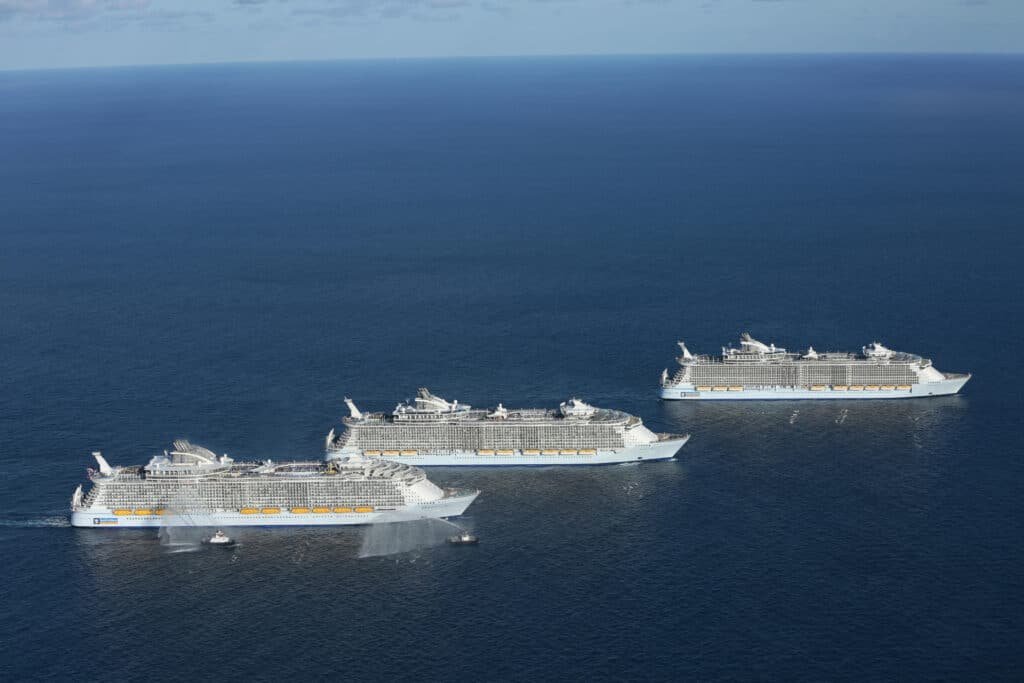Evolution of Cruise Ships : The best Floating Cities

Cruise ships have undergone a remarkable transformation since their inception, evolving from basic vessels into luxurious floating cities. This article explores the fascinating history and evolution of cruise ships, highlighting significant milestones, technological advancements, and the unparalleled experiences they offer today.
The Early Days of Cruise Travel

The origins of cruise travel date back to the early 19th century when steamships primarily served as a means of transportation for immigrants and then cargo. However, the concept of leisure cruising began to take shape in the mid-19th century. Cunard Line, founded in 1839, played a pivotal role in this transformation by offering the first scheduled transatlantic passenger service.
The Introduction of Luxury
By the late 19th century, cruise lines recognized the potential of offering luxurious travel experiences. The RMS Titanic, launched in 1912, exemplified this trend with its opulent interiors and amenities. Future cruise ships prioritized passenger comfort and luxury, setting the stage for them to outshine the grandeur of sailing ships despite the tragedy of sinking.
Evolution of Cruise Ships Post-War Expansion and Innovation

The post-World War II era marked a significant turning point in the evolution of cruise ships. The demand for leisure travel surged, leading to the construction of larger and then more sophisticated vessels. Cruise lines such as Norwegian Cruise Line (NCL) and then Royal Caribbean International emerged as industry leaders during this period.
The Birth of Modern Cruising
The 1970s marked a pivotal decade for the cruise industry, often referred to as the “Love Boat” era. The surge in mainstream popularity of cruising, fueled by the iconic television series “The Love Boat,” defined this period. The show, which depicted the romantic and adventurous experiences of passengers aboard a luxury cruise ship, captivated audiences and showcased the unique allure of cruising. As a result, cruising transitioned from being perceived as an exclusive luxury to a sought-after vacation option for a broader demographic.
The Love Boat Influence

“The Love Boat” series played a critical role in demystifying cruise vacations. By bringing the lavish and exciting lifestyle aboard cruise ships into living rooms across the world, it made the idea of cruising accessible and desirable to millions. The show featured a variety of storylines that highlighted the diverse experiences available on cruises, from romance and adventure to relaxation and entertainment. This widespread exposure significantly contributed to the industry’s growth, as more people were inspired to experience the joys of cruising firsthand.
Innovative Amenities and Experiences
The 1970s also saw the introduction of groundbreaking amenities that redefined the cruising experience. Cruise lines began to offer a plethora of onboard facilities designed to enhance passenger enjoyment and comfort. Swimming pools, casinos, and themed entertainment became standard features, transforming cruise ships into floating resorts. These innovations not only attracted a wider audience but also set new standards for the industry, driving competition and continuous improvement.
Evolution of Cruise Ships Technological Advancements in Cruising
The evolution of cruise ships has been significantly influenced by technological advancements, which have continually enhanced passenger comfort, safety, and overall experience.
Stabilizer Systems
One of the most notable technological breakthroughs in the cruise industry was the development of stabilizer systems in the 1950s. These systems, designed to minimize the roll of the ship caused by rough seas, drastically improved passenger comfort.
The Rise of Mega Cruise Ships in Evolution of Cruise Ships
The late 20th and early 21st centuries witnessed the emergence of mega cruise ships, capable of carrying thousands of passengers. These floating cities offer an extensive array of amenities and activities, catering to diverse tastes and preferences.
Royal Caribbean’s Oasis-Class Ships

Royal Caribbean’s Oasis-class ships, introduced in 2009, are among the largest and most innovative cruise ships in the world. These ships feature multiple neighborhoods, including Central Park, Boardwalk, and the Royal Promenade, each offering unique experiences. Amenities such as zip lines, ice-skating rinks, and Broadway-style shows have redefined the cruising experience.
Evolution of Cruise Ships in Environmental Considerations
As cruise ships have grown in size, so has the emphasis on sustainability. Modern cruise lines are investing in eco-friendly technologies to reduce their environmental footprint. Innovations such as liquefied natural gas (LNG) propulsion, advanced wastewater treatment systems, and energy-efficient lighting are becoming standard features on new ships.
The Future of Cruise Ships
The future of cruise ships promises even more exciting developments as the industry continues to evolve. Key trends include the integration of cutting-edge technology, enhanced passenger experiences, and a strong focus on sustainability.
Evolution of Cruise Ships in Smart Ships and Connectivity

The concept of smart ships is revolutionizing the cruise industry. Cruise lines are incorporating advanced technology to enhance passenger experiences. Features such as facial recognition for boarding, personalized itineraries, and interactive digital signage are becoming increasingly common. High-speed internet connectivity is also improving, allowing passengers to stay connected while at sea.
Evolution of Cruise Ships Luxury and Personalization
Future cruise ships will offer even more luxurious and personalized experiences. Exclusive suites with private amenities, butler services, and customizable dining options are just a few examples of how cruise lines are catering to the discerning traveler. Additionally, themed cruises and specialized itineraries are gaining popularity, providing unique and immersive experiences.
Evolution of Cruise Ships Sustainable Cruising
Sustainability remains a top priority for the cruise industry. Cruise lines are committed to reducing their environmental impact through various initiatives. Hybrid propulsion systems, zero-emission ports, and eco-friendly excursions are some of the measures being implemented to promote sustainable cruising. The industry is also exploring the use of alternative fuels, such as hydrogen and then biofuels, to further reduce emissions.
Conclusion
The evolution of cruise ships from modest steamships to luxurious floating cities is a testament to the industry’s innovation and then adaptability. Today’s cruise ships offer an unparalleled travel experience, combining cutting-edge technology, opulent amenities, and then a commitment to sustainability. As we look to the future, the cruise industry will continue to push the boundaries of what is possible, providing unforgettable journeys for generations to come.
Read more: Bass Fishing Technologies





